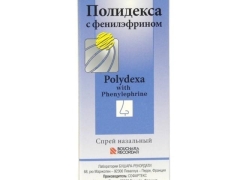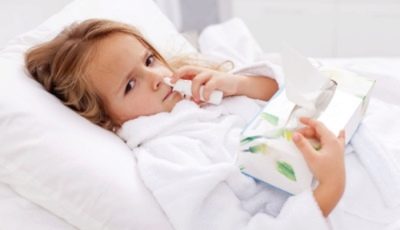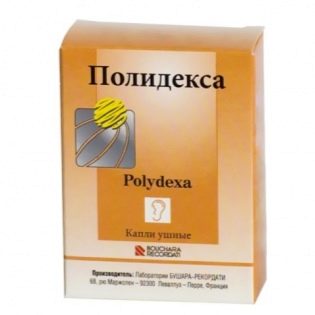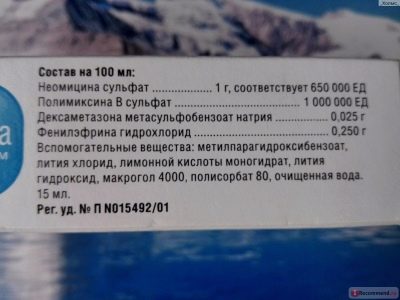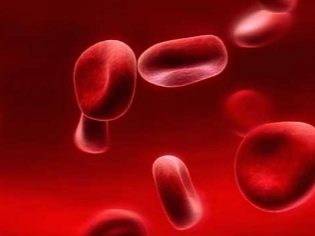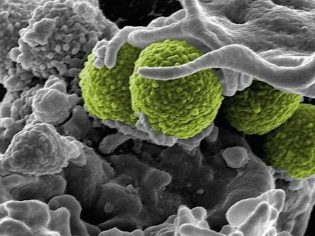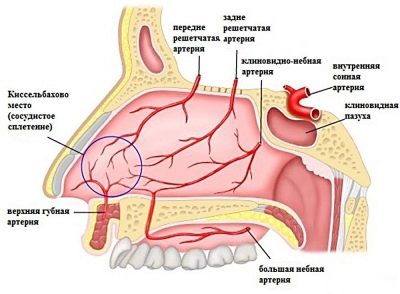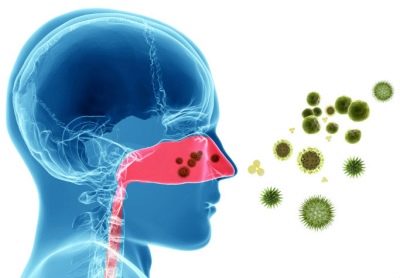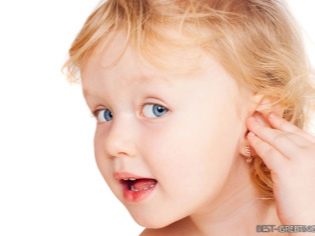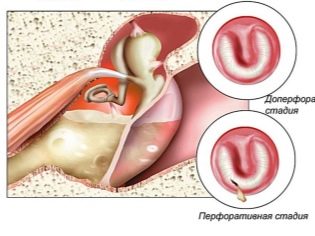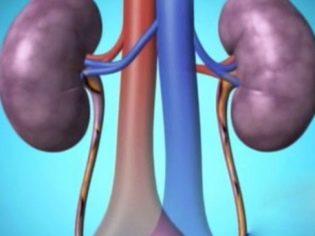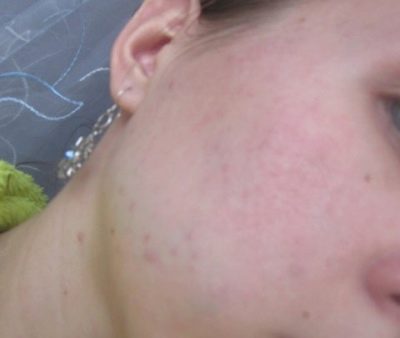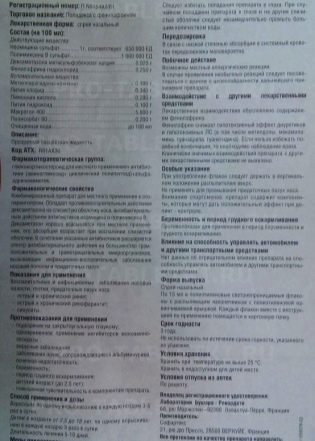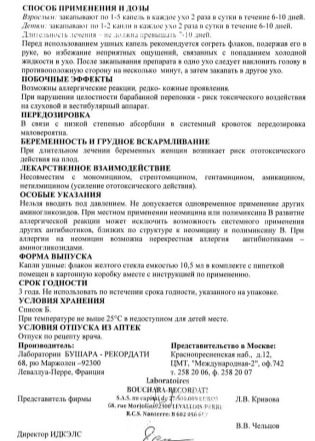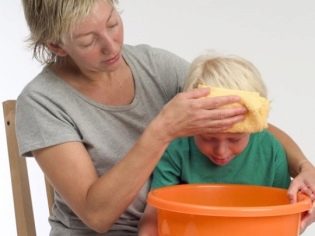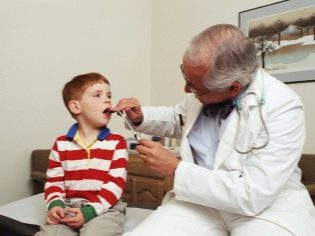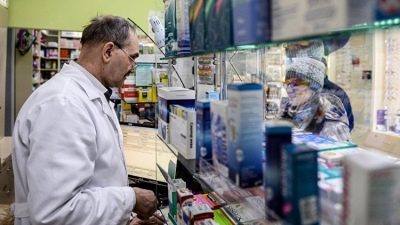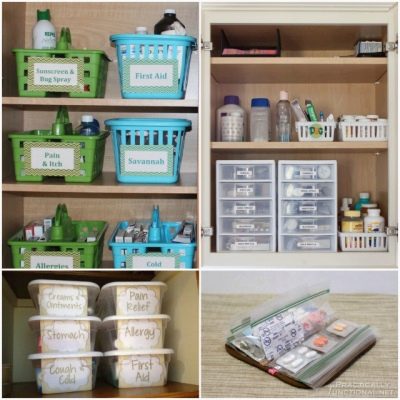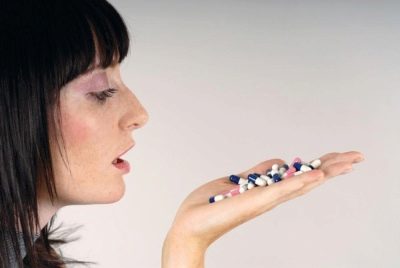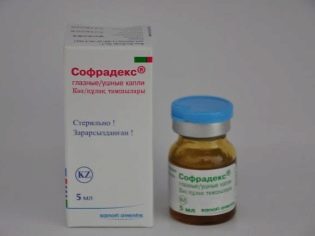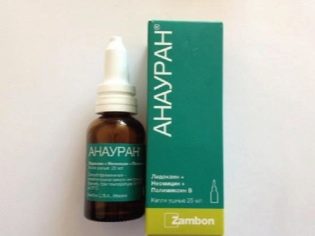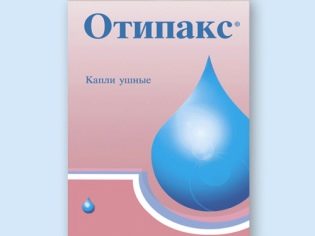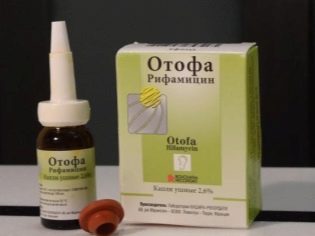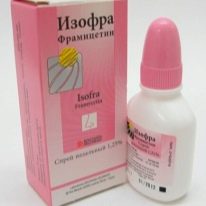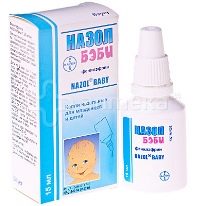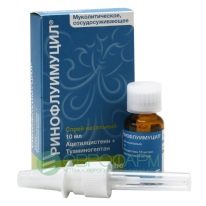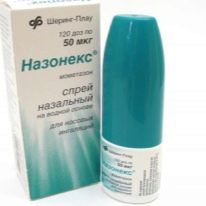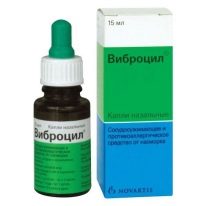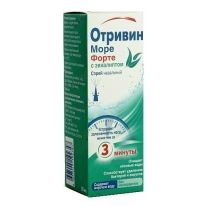Polydex for children: instructions for use
Owing to a cold or ORVI, children often have bacterial complications, for the treatment of which drugs are required, including antibacterial substances. These remedies include Polydex, but many mothers, having read the instructions for this medicine, begin to worry about whether to use it as a child, and whether such a remedy will harm the child’s body.
To understand why the doctor prescribed Polydex, and whether this drug really helps the baby, it is worth figuring out what substances it includes, how they act and in what dose they are used.
Release form
The drug is available in two different forms, differing in composition and application features:
- Ear drops. They are represented by a light yellow liquid, placed in a glass bottle closed in a rubber stopper and a lid of aluminum in a volume of 10.5 ml. Such a solution is clear, but foams when mixed. The bottle is supplied with a separately packaged dosing pipette, which is closed with a cap. A box of such Polydex differs in pink-orange color.
- Nasal spray. This drug is called Polydex with Phenylephrine and is sold in blue boxes. Such packaging has an opaque polyethylene bottle equipped with a spray tip and a cap. Inside the vial is 15 ml of a clear solution without any color.
Composition
The Polydex action is provided by a combination of three components:
- neomycin sulfate, presented in a dose of 6500 U (10 mg) in each milliliter of the solution;
- polymyxin B in the form of sulfate, the amount of which in 1 ml is 10 thousand IU;
- dexamethasone in the form of sodium metasulfobenzoate. Its dosage per 1 ml is 1 mg.
Additionally, ear drops contain macrogol 400, sodium hydroxide, purified water and thiomersal. In addition, this medicine still has citric acid and polysorbate 80.
The composition of the spray, as is evident from the name of such a drug, added another active substance - phenylephrine. In 1 ml of a solution of such a component is represented by a dosage of 25 mg.
The amount of polymyxin B and neomycin in the nasal spray is the same as in drops (10,000 and 6,500 U, respectively), and the dose of dexamethasone is slightly higher, since it is 2.5 mg per 1 ml of the drug.
Spray auxiliary ingredients are also different. This form of Polydex, as well as ear drops, includes citric acid, polysorbate 80, pure water and macrogol 400. However, besides such substances, the preparation also contains lithium hydroxide, methyl parahydroxybenzoate and lithium chloride. The presence of these components is important to consider when treating children who are prone to allergies.
Operating principle
Due to the presence of several components, Polydex is a combined agent that simultaneously has the following effects:
- Reduction of the inflammatory process and allergic manifestations. This action of the drug provides glucocorticoid hormone dexamethasone. This ingredient reduces the activity of compounds that cause and maintain inflammation. In addition, under its action, the walls of blood vessels and cells are strengthened. As a result of the effect of dexamethasone, allergy symptoms and inflammation activity are reduced.
- Suppression of the activity of harmful microorganisms. This effect of the drug is due to the presence in its composition of two antibacterial components.
Neomycin, an antibiotic aminoglycoside, is effective against Escherichia coli, Staphylococcus, Klebsiell and many other bacteria.
Polymyxin (an antibiotic that belongs to cyclic polypeptides) is noted for activity against hemophilic rods, pseudomonads, esherichia, and some other microorganisms.
The combination of such antimicrobial agents expands the range of the drug's effects, but these antibiotics do not act on streptococci.
The presence of phenylephrine in the nasal spray additionally affects the condition of the nasal vessels. This component causes their narrowing, which reduces the profusion of nasal discharge and facilitates breathing.
Indications
Polydex Ear Drops Apply with external otitis, as well as eczema of the ear canalif it is complicated by a bacterial infection.
The drug in the form of a spray, including phenylephrine, discharged with rhinitis, rhinopharyngitis, sinusitis, adenoiditis and other inflammatory diseases of upper respiratory tract.
From what age is prescribed?
Polydex ear drops are not contraindicated for children of any age and can be used both in schoolchildren and infants.
Spray, which additionally includes phenylephrine, assigned to patients older than 2.5 years. If a child is younger than this age, an analogue is chosen for his treatment, which is allowed at an early age.
Contraindications
Polydex should not be injected into the ears when:
- hypersensitivity to any component of the droplets;
- allergies to aminoglycoside antibiotics;
- ear infections by viruses;
- mycosis of the ears;
- perforation of the eardrum.
Nasal spray should not be sprayed to children with:
- individual intolerance to its ingredients;
- angle-closure glaucoma;
- viral infection;
- pathologies of the kidneys.
The use of Polydex with phenylephrine in patients with hypertension or hyperthyroidism should be under the supervision of a doctor.
Side effects
Any type of Polydex can provoke an allergic reaction, for example, a skin rash. If you use drops in the treatment of a child with a damaged eardrum, it will adversely affect hearing and vestibular function.
Instructions for use
Polydex is dropped into the ear twice a day by 1-2 drops - alternately in each ear canal. The duration of the use of such drugs is usually 6-10 days.
Before you put the medicine in your ear, The bottle should be held for a while in the palm of your hand so that the solution warms up.. As soon as the drops fall into the ear, the child should tilt his head so that the drug does not leak out.
Polydex with phenylephrine is injected into the nasal passages three times a day. The bottle during the introduction of the solution does not need to overturn.
A single dose of medicine for children is the amount of solution that gets into the nose after one push. on the spray nozzle.
If the medication is prescribed to a teenager over 15 years of age, the frequency of injections can be increased up to 4-5 times. The duration of treatment with such Polydex is 5-10 days.
Overdose
According to the annotations to the spray and drops, the negative effect of a large dose of such drugs does not develop, since their active components are absorbed into the bloodstream in a meager amount, unable to worsen the patient’s general condition.
If the child accidentally drank the solution, immediately induce vomiting and gastric lavage, then give the sorbent and, if necessary, show the baby to the doctor.
Interaction with other drugs
You can not use Polydex and at the same time give your child any other aminoglycosides, as this will increase the risk of hearing impairment. Phenylephrine spray should not be used with drugs that are MAO inhibitors.
Terms of sale
Both types of Polydex are prescription drugs, so before buying drops or spray in a pharmacy, the child should be examined by a doctor who will write out a prescription for the right medication.
The average price of a bottle of ear drops is 240 rubles, and for one nasal spray you need to pay about 350 rubles.
Storage conditions
Both Polidex drops and phenylephrine spray should be kept in a dry place so that the medications are inaccessible to children.
The optimum temperature for such medicines is from 5 to 25 degrees Celsius.
The shelf life of all forms of medication is 3 years and is marked both on the box and on the bottle. If it expired, the drugs need to be thrown away.
Reviews
On the use of Polydex parents respond mostly positively. Ear drops are praised for effective action, soft pipette, rarity of side effects.
The advantages of the nasal spray also include a quick therapeutic effect and ease of use.
One of the main disadvantages of Polydex is considered expensive, so many mothers are looking for a similar drug cheaper.
Also, some parents do not like the presence of the hormone in the composition of the drug, while others negatively relate to antibacterial substances in the solution.
Doctors speak of sprays and drops mostly well, often prescribing them when bacteria affect the outer ear or nasopharynx. Among the advantages of Polydex, they emphasize a fairly quick effect and exclusively local action, due to which ear drops are allowed at any age. Cases of allergies to drops or spray doctors say very rarely.
Dr. Komarovsky calls Polydex an effective remedy for otitis, but nasal spray does not recommend use, because he believes that antibiotics in the nose do more harm than good. In his opinion, because of them, allergic reactions occur and the resistance of bacteria develops, which complicates the further treatment of purulent rhinitis or sinusitis.
Analogs
The drug that includes the same ingredients as Polydex is Maxitrol. However, this drug is released in the form of eye drops, so if you need to replace Polydex, the doctor must choose a tool with a different composition, but with a similar effect on the children's body.
For example, if you need to prescribe a medicine instead of Polydex ear drops, this could be one of these drugs:
- Sofradex. Such drops are used for diseases of the ears or eyes. They are also a combined agent, since they include three active ingredients at once - dexamethasone and two antimicrobial substances. However, this medication is contraindicated for the treatment of infants, and older children are prescribed with caution.
- Anauran. The composition of this drug is similar to Polydex, as in such drops there is also polymyxin B and neomycin. But they are not supplemented with a hormone, but with an anesthetic (lidocaine is an ingredient with a local anesthetic effect), therefore the medicine is in demand for otitis with severe pain. The tool can be used in children older than 1 year.
- Otipaks. This medicine is used for the symptomatic treatment of otitis because it eliminates pain and reduces the activity of inflammation. These effects are due to the presence of phenazone and anesthetic lidocaine in the composition of the droplets of the anti-inflammatory substance. The drug can be dripped at any age. Its counterpart are drops OtyrelaxBecause their composition includes the same ingredients.
- Otofa. The action of this tool is provided with antibiotic rifamycin. Unlike Polydex and many other ear drops, this medicine can be used when the eardrum is damaged. There is no age limit for this medication, but it is dripped to children only after a medical examination.
If you need to replace Polydex with phenylephrine, the doctor may recommend these drugs:
- Isofra. This nasal spray is required for green secretions from the nose, since its action is provided by the antibiotic framycetin. The drug is prescribed from 1 year, but if necessary, the doctor may advise him and infants older than a month.
- Nazol Baby. The basis of such drops is phenylephrine, so the drug is often prescribed from the common cold. In childhood, it can be used from birth if the medicine is prescribed by a pediatrician.
- Rinofluimucil. This drug contains acetylcysteine in combination with tuaminoheptan. These substances have a vasoconstrictive and mucolytic effect, which makes the drug in demand for rhinitis or sinusitis. There are no contraindications for such a nasal spray, but this drug is prescribed with caution to children under three years of age.
- Nasonex. The main component of this spray is glutacorticoid hormone mometasone. Unlike Polydex, this medicine does not include any antibacterial components, so it is not used for bacterial rhinitis. The drug is prescribed to children with allergic rhinitis from 2 years of age.
- Vibrocil. Such a drug, like Polydex in a spray, contains phenylephrine, but it is not supplemented with antibiotics, but with a substance that acts on histamine receptors (dimetindenom). The drug is prescribed for different types of rhinitis and sinusitis, as well as for adenoids. Drops are allowed to use in children older than a year, and spray or gel discharged from 6 years of age.
- Otrivin Sea Forte. The basis of such a nasal spray is a hypertonic solution of sea water, to which menthol and eucalyptus oil are added. The use of such Otrivina is effective for nasal congestion and is permitted from the age of six.
On the main methods of treatment of rhinitis, see the following video.
